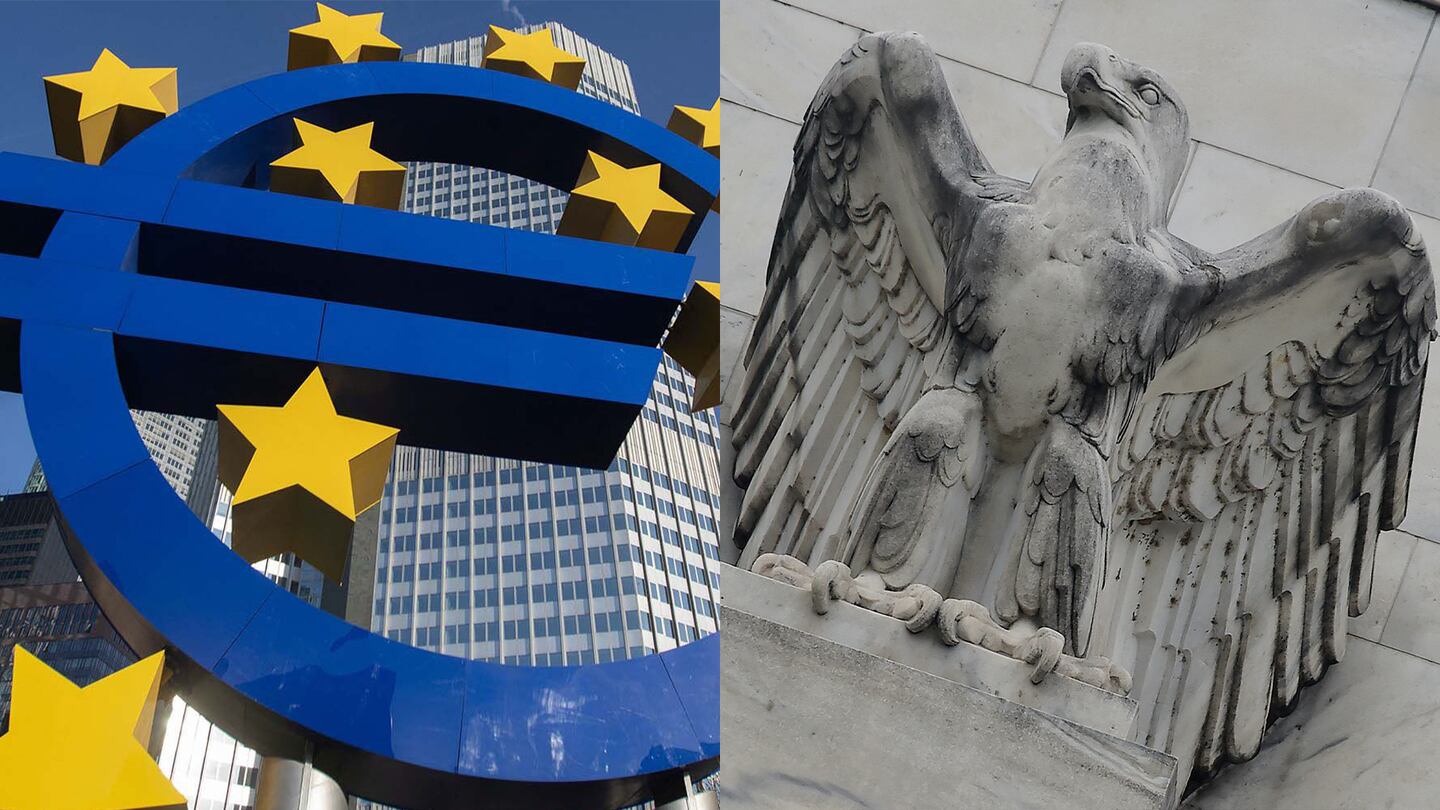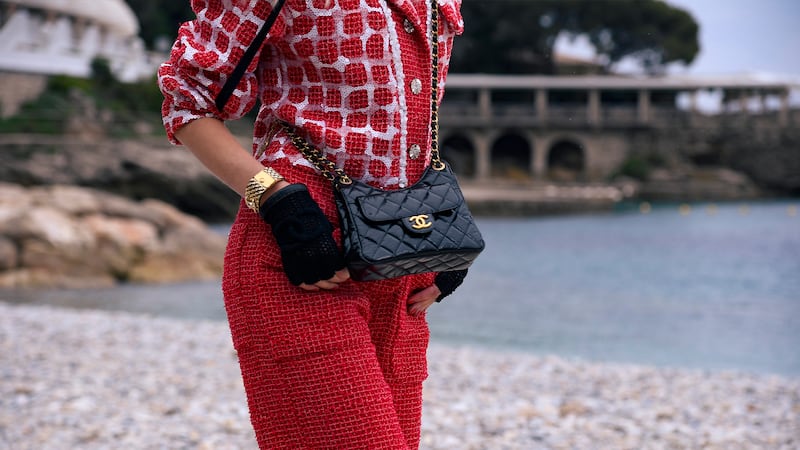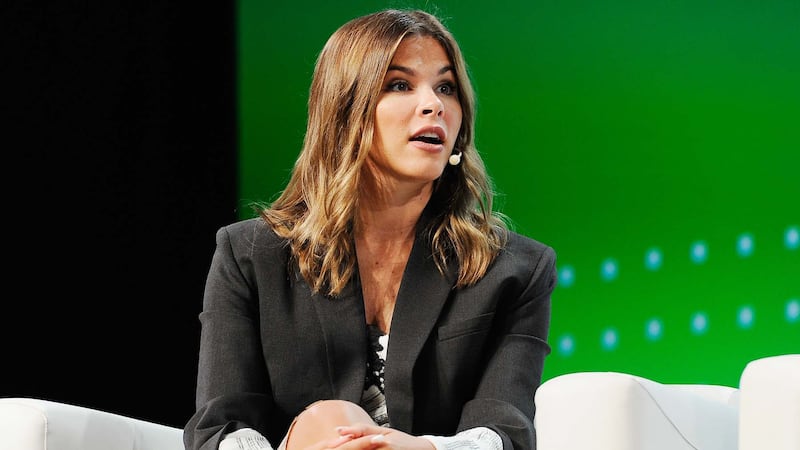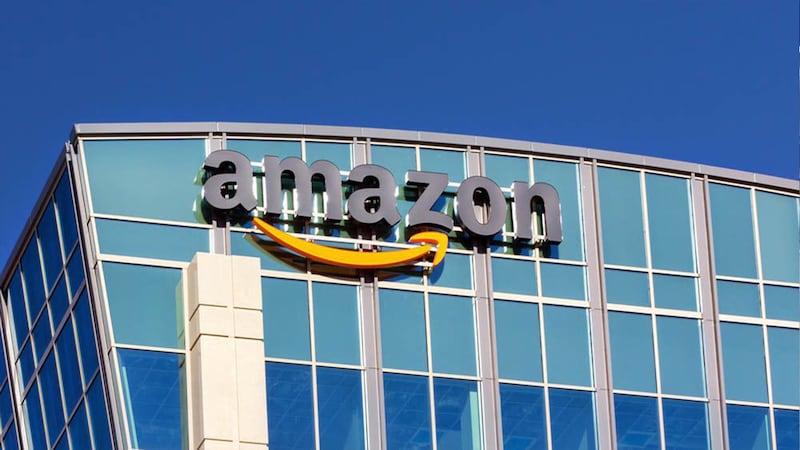
The Business of Fashion
Agenda-setting intelligence, analysis and advice for the global fashion community.

Agenda-setting intelligence, analysis and advice for the global fashion community.

Last week, the euro neared parity with the US dollar for the first time in two decades, dipping to as low as $1.04 after a year of steady declines.
Europe’s common currency has since regained some ground, reaching $1.07 on Friday morning. But many analysts are convinced the value of one euro could sink below one dollar by the end of the year.
The shift reflects a darkening outlook for Europe’s economy in the wake of Russia’s invasion of Ukraine, as well as a surging dollar as the US tightens monetary policy.
But amid the flux, a weaker euro and stronger dollar has some benefits for the largely Europe-based luxury sector, which could enjoy a boost to margins and an easier time selling to travellers from the dynamic US market.
ADVERTISEMENT
Why is the euro weakening against the dollar?
Since the Ukraine assault began in late February, the euro has fallen more than 5 percent against the dollar as European countries struggle to find alternatives to Russian oil and gas, a major problem if energy ties are severed.
At the same time, the US Federal Reserve is forging ahead with hikes to interest rates in a bid to slow the country’s worst inflation in 40 years, boosting the dollar’s value against many currencies even as the US economy looks increasingly at risk of recession.
None of those factors are good news for luxury brands, which depend on consumers’ optimism and sense of financial security to drive purchases of $10,000 Chanel bags and $1,000 Balenciaga sneakers: Luxury stocks have tumbled since the start of the year, with LVMH falling by 20 percent and Kering and Richemont both falling by around 30 percent. Even as they reported surging sales in late 2021 and early 2022, the war in Ukraine and accelerating inflation, as well as concerns over coronavirus lockdowns in China, have clouded the sector’s outlook and dampened investor sentiment.
“We face a global environment which is the most unsettled we have experienced for a number of years… We face volatile times ahead,” Richemont chairman Johann Rupert said last week. It was a far cry from the heady mood of 2021, when a post-Covid rebound showed no signs of slowing at the sector’s top brands.
But a weak euro and strong dollar can benefit luxury companies for several reasons.
How does a stronger dollar impact the bottom line?
A euro that is weaker against the dollar will boost profit margins. Luxury brands are mostly European companies whose costs are largely in euros — from corporate salaries to manufacturing facilities to rents for flagship stores on Avenue Montaigne and Via Montenapoleone. At the same time, every sale made in the dynamic US market will be worth more when converted back into euros. (A similar dynamic applies to British luxury firms like Burberry, as the pound has also fallen against the dollar, and Swiss watchmakers following recent weakness in the Swiss franc, although the franc has recovered against the dollar in recent weeks).
ADVERTISEMENT
For all their talk about “harmonising” prices across regions, brands are unlikely to pass the favourable exchange rate on to US-based consumers. Moves aimed at equalising prices across regions do occur, but usually only in one direction — up.
So the wider margins from a weak euro will provide welcome breathing room, offsetting the rising cost of materials and labour at a time when the sector’s outlook is increasingly unclear.
Brands use hedging contracts to help smooth currency risk, meaning many transactions are still being settled at the old, less favourable exchange rate, so the immediate impact could be limited. But no company hedges 100 percent of its transactions, and the longer a weaker euro lasts the more the sector will benefit.
“A weak euro is very good for [French luxury] companies’ bottom line,” Chanel’s chief financial officer Philippe Blondiaux said as the brand reported earnings this week.
What is the impact on travel retail?
The decline of the euro comes as international travel shows signs of finally rebounding from the pandemic. While key Chinese consumers remain largely grounded, Americans are returning to European capitals in droves, and seem to be more interested in luxury brands than ever. Luxury conglomerate LVMH saw sales in the US grow 24 percent above pre-pandemic levels last year. A weaker euro is likely to reinforce both these trends and incentivise Americans to shop while in Europe.
A Louis Vuitton bag that costs $2,030 in the US currently goes for €1,500 (or $1,602) in France. That’s a 21 percent savings. The gap widens to around over 30 percent when customers take advantage of a sales tax rebate of around 12 percent offered to foreign visitors by countries like France and Italy. (Declaring the bag upon return to the US could eat into those savings, although in the case of the $1,602 Vuitton bag, a couple would be allowed to pool their $800 per person exemption and slip by duty-free).
This kind of arbitrage makes shoppers feel like they’re getting a deal. For brands, many sales made to travelling customers are comprised of purchases they simply wouldn’t have made at home. “It’s really making the pie bigger,” a finance executive at one Italian luxury brand said.
ADVERTISEMENT
The more appealing prices could also help bolster luxury brands’ appeal with aspirational shoppers feeling “priced out” following recent increases.
How should brands respond to the shift?
In order to take advantage of the emerging travel retail opportunity, however, the luxury industry will need to work harder to educate US consumers about tax-rebate services: the fact that duty-free shopping is permitted outside of airports is something many Americans don’t realise.
To be sure, the benefits of a weaker euro could be short lived: spiking energy and food costs since Russia’s Ukraine attack have caused inflation to reach Europe’s shores as well, and the European Central Bank could raise interest rates quicker than expected. On the other hand, the US could slow down its rate hikes as the risk of recession mounts. But analysts expect the euro to trade at $1.04 year from now, in line with Europe’s pattern of tightening monetary policy more slowly than the US, according to Trading Economics’ average estimate.
Luxury brands are also aware that a weaker euro comes with some risks. The price gap between the US and Europe could incentivise resellers, and eventually lead to a parallel market for luxury goods, as it did in China for years. That would undermine brands’ efforts to establish direct, regular contact with customers — a particularly pivotal objective with American customers, where brands are keen to hold onto surging ranks of new clients since the pandemic.
That risk remains muted, however, as most Americans are reassured of a product’s authenticity when they buy directly from brands — in addition to simply finding it more enjoyable. Plus, the country’s tightly-monitored entry ports and rule-following culture makes cheating customs and import duties a relatively fringe activity.
Brands worried about cannibalising their direct business in the US could also put an end to parallel trade simply by raising their prices in the eurozone. Euro weakness could create the “necessity to readjust our prices to avoid price gaps,” Chanel’s Blondiaux said.
Increased costs, and a desire to preserve a certain positioning relative to players like Chanel (which has aggressively increased prices) mean some modest price hikes could be on the horizon. But many have already pushed prices upwards since the pandemic, and with uncertainty on the rise drastic price hikes seem unlikely for the wider sector.
Most brands will simply be happy to see a renewed buzz on European shopping streets — which house some of their biggest, best-staffed and previously most-profitable points of sale — after years of pandemic travel restrictions.
THE NEWS IN BRIEF
FASHION, BUSINESS AND THE ECONOMY

Chanel to open private stores for top clients as sales soar 50 percent. The French luxury giant said 2021 revenues rose 23 percent over pre-pandemic levels to $15 billion. The brand now plans to open dedicated boutiques for top-spending clients as rapid growth risks overcrowding its stores, chief financial officer Philippe Blondiaux revealed.
Farfetch slashes its outlook for the year. The online luxury platform significantly scaled back its expectations for sales in 2022, as the loss of its Russia business and other factors have taken a toll.
Ralph Lauren forecasts full-year revenue above estimates. Demand for the brand’s luxury clothing and accessories from its biggest markets in North America and Europe has stayed strong as higher-income customers remain unaffected by inflation.
Oura launches Gucci smart ring. The health tech company — best known for its smart ring that tracks everything from general fitness to sleep patterns — has tapped Kering-owned Gucci for its first luxury fashion partnership.
Russians turn to domestic clothing brands amid Western exodus. Sales of clothes, footwear and accessories by Russian brands and manufacturers were 2.6 times higher in March and April than in the same months last year, Ozon, Russia’s second-largest e-commerce platform, said.
Nordstrom defies retail slump with higher results forecast. Net sales across Nordstrom banner stores exceeded pre-pandemic levels in the first quarter with a 23.5 percent jump as Americans returning to offices and social events snapped up designer apparel and footwear. The retailer also announced it was closing Trunk Club, its personalised clothing service.
Macy’s lifts profit outlook as special occasions boost sales. The department store chain said on Thursday it now expects earnings in the range of $4.53 to $4.95 a share this year, excluding some items, up from a prior forecast of $4.13 to $4.52, as it reported first-quarter results. Analysts were looking for $4.36, on average.
Lululemon, Fenty Beauty, Goop and Glossier voice support for abortion access. A total of 62 beauty and wellness companies issued a statement Tuesday in support of “Don’t Ban Equality,” a consortium of non-profits that first launched in 2019 in response to growing restrictions to abortion access in certain US states.
Ted Baker progresses sale to preferred suitor as Sycamore pulls out, narrows annual loss. The sale will move into a weeks-long process of “confirmatory due diligence,” the company said. There can be no certainty that an offer will be made, Ted Baker said, adding it could still terminate the process if it wishes to. On Thursday, the brand posted a smaller annual loss and pointed to robust sales in the coming months following return to pre-pandemic lifestyles.
UK luxury brands urge government to bring back tax-free shopping. A group of 250 luxury UK brands, including Burberry Group Plc and Harrods Ltd, have called on the government to reintroduce tax-free shopping for tourists as a way to boost the economy.
Gap slashes annual forecasts as inflation drains demand. Following the retailer’s decision to cut annual sales and profit forecasts on Thursday in the face of poor demand and decades-high inflation, shares of the company plunged more than 15 percent in extended trading.
Anti Social Social Club acquired by Marquee Brands. The purchase of the polarising streetwear label by the same company that backs Martha Stewart and Ben Sherman points to an M&A market in transition.
Growing international sales boost Gymshark revenue and profits. The UK-based activewear brand reported a 54 percent increase in revenue in the year ending July 31 2021, according to accounts filed to the UK’s Companies House.
Abercrombie sees weaker sales, margins as inflation bites. The retailer trimmed its full-year sales forecast on Tuesday as record-high inflation hits demand for the retailer’s jeans, tops and dresses, sending its shares down 18 percent in premarket trade.
THE BUSINESS OF BEAUTY

Glossier chief executive Emily Weiss steps down. Weiss, who founded the company in 2014, will lead its board as executive chairwoman. Kyle Leahy, Glossier’s chief commercial officer, will become CEO effective immediately. The brand’s chief marketing officer Ali Weiss is also leaving the company.
Chanel’s beauty business could be majority direct-to-consumer ‘within a few years.’ Chief financial officer Philippe Blondiaux told BoF the division’s e-commerce sales grew 32 percent last year. The French luxury brand also opened 50 new stand-alone beauty boutiques as it reduces its historic dependence on wholesale partners.
PEOPLE

Etro names Marco De Vincenzo as creative director. De Vincenzo’s appointment marks the latest move to revitalise the house after L Catterton acquired a majority stake in the company last year, a deal that reportedly valued the company at €500 million.
Calvin Klein hires Jonathan Bottomley as global chief marketing officer. Bottomley, who previously served as chief marketing officer at the bedding brand Boll & Branch and before that as CMO for Ralph Lauren, will begin his tenure June 6. He will report to Trish Donnelly, chief executive of PVH Americas and Calvin Klein Global.
Agnelli’s Exor appoints Hermès chief executive as board member, separates CEO and chairman roles. The holding company of Italy’s Agnelli family, which has stakes in brands including Shang Xia and Christian Louboutin, said on Tuesday it appointed Axel Dumas, chief executive of French fashion house Hermès, as a non-executive board member, its latest move in the luxury sector.
MEDIA AND TECHNOLOGY

Amazon faces record challenges at shareholder meeting; opens first physical fashion store. The e-commerce giant faces 14 investor resolutions challenging its policies at its annual shareholder meeting Wednesday, as socially minded investors scrutinise its treatment of workers. As well, on Wednesday the brand said it opened its first brick-and-mortar clothing store.
Compiled by Joan Kennedy.
In 2020, like many companies, the $50 billion yoga apparel brand created a new department to improve internal diversity and inclusion, and to create a more equitable playing field for minorities. In interviews with BoF, 14 current and former employees said things only got worse.
For fashion’s private market investors, deal-making may provide less-than-ideal returns and raise questions about the long-term value creation opportunities across parts of the fashion industry, reports The State of Fashion 2024.
A blockbuster public listing should clear the way for other brands to try their luck. That, plus LVMH results and what else to watch for in the coming week.
L Catterton, the private-equity firm with close ties to LVMH and Bernard Arnault that’s preparing to take Birkenstock public, has become an investment giant in the consumer-goods space, with stakes in companies selling everything from fashion to pet food to tacos.